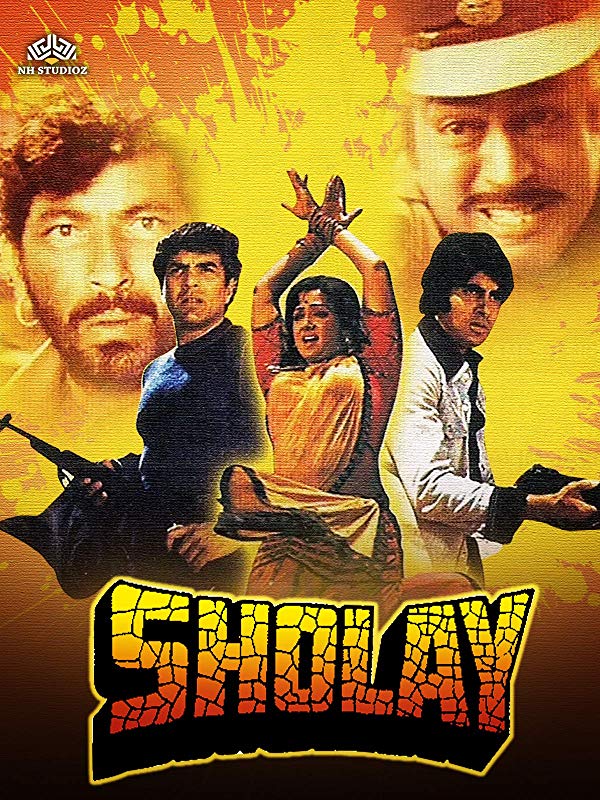Sholay is a Bollywood movie which did brisk business in the theatres running for more than 5 years. Sholay’s dialogues became so popular that its audio cassettes sold like hot cakes decades after the movie was released. Today, I am going to deep dive into the brilliant and captivating communication styles used by its legendary characters of Gabbar, Jai, Veeru and Basanti.

Let me begin with the character of Gabbar Singh played by Amjad Khan who contributed immensely to the success of the movie. Gabbar was a strong and direct communicator. His voice modulation, emotional touch, eye contact, dialogues content and delivery style coupled with his body language fascinated the audience.
His dialogue of
“ Jo dar gaya, samjho mar gaya”
established him an iconic villain of Hindi movie cinema. Ever thought what helped Gabbar become an icon? Which part of his character was so impactful to the audience? It was his communication style. He displayed a go getter attitude, he was decisive, competitive, independent and always very confident. With his direct style of communication always focused on results and thus he asked his crew,
“Kitne Aadmi the?”
“Wo do the aur tum teen, fir bhi wapas aa gaye, wo bhi khaali haath.”
Gabbar liked to be in control and became frustrated when his crew fails to compete with the duo of Jai and Veeru. When Gabbar spoke,
“Ab tera kya hoga Kalia?”
– we knew he had taken a strong decision which he was communicating to Kalia blended with sarcasm. His impatience was aptly visible, and he took punitive measures. His measures however were extreme with the cold-blooded murder of poor Kalia and his mates.
Later in the movie, when he captured Jai and asked Basanti to dance, Gabbar once again displayed more concern for results than relationship and he warned Basanti:
“Jab tak tere per challenge uski saans chalegi. Tere per ruke to ye bandook chalegi”
Gabbar’s pace was fast and decisive. He liked to be busy, efficient, structured within his defined banditry environment of Ramgarh.
Another character which left deep impact was Veeru played by Dharmendra. Veeru’s communication style was supportive. He was always calm, steady, approachable and gentle. He gave high priority to close relationships be it being friends with Jai or wooing Basanti. He did not like direct conflicts hence when Basanti’s maternal aunt – her Mausi declined to get him married to Basanti he parched himself up on the village tank and threatened the villagers of committing suicide. In the hilarious scene, we find Veeru negotiating with the villagers to get Mausi agree to get him married to Basanti. Don’t we vividly remember his popular dialogue:
“Dekh lena gaanw-waalo, when i death police coming. police coming, budhiyaa going to jail. In jail ,budhiyaa chakki pising and pising and pising and PISING.“
The patience with which he got his marriage agreement coupled with the drama that he created did support his intention to win the girl of his choice.
And then there was Amitabh Bachan who played Jai. Who can forget Jai’s conversation with Mausi where he makes a successful attempt to convince and forbid Mausi at the same time of marrying Veeru with Basanti.
“bas mausi khandaan ka pta chalte hi hum aapko khabar kar denge
Toh main yeh rishta pakka samjoon?“
The conversation between Mausi and Jai is intelligent in various ways. Jai as Veeru’s friend takes careful strides to convey the underlying message to Mausi that his friend has few hard to ignore habits that she should be aware of. Displaying an analytical style of communication, Jai with precision and logic systematically conveys to Mausi and gets her to reject the marriage offer. Very cleverly, he did not display his negative opinion about Veeru and yet made sure his position as Veeru’s friend and Mausi’s expectation both were safe.
And at the other end of the spectrum, we have Basanti played brilliantly by Hema Malini with her endless banter. Need I say her communication style is energetic, spontaneous and fun loving. Remember her over the top calling out:
“Kyunki ye kon bola?”
Her nature was gregarious with an initiating communication style and she was someone who spoke more than she cared to listen. She spoke so much that she missed listening to herself. That is why Jai asks her:
“tumahara naam kya hai Basanti?”
In the movie, Basanti felt accepted and motivated by relationships and hence gets bullied into falling in love with Veeru. She responded strongly to praise and approval showered by Veeru during their courtship. With her fast-paced communication style and her fast-paced ride on Dhanno, Basanti was impulsive and preferred stimulating, personal and friendly environment around herself.
To conclude, Sholay is impactful and memorable to audiences across generations and decades.
The movie is brilliant at many levels and I found the study of each character as a learning on different communication styles. The four major characters displayed the four major communication style we Toastmasters should be aware of: Direct, Supportive, Analytical and Initiating. By understanding different communications styles, we ourselves can be better and influential communicators.
As a parting thought, do u want to know whose communication style in the movie I resonate with. It is Gabbar!


